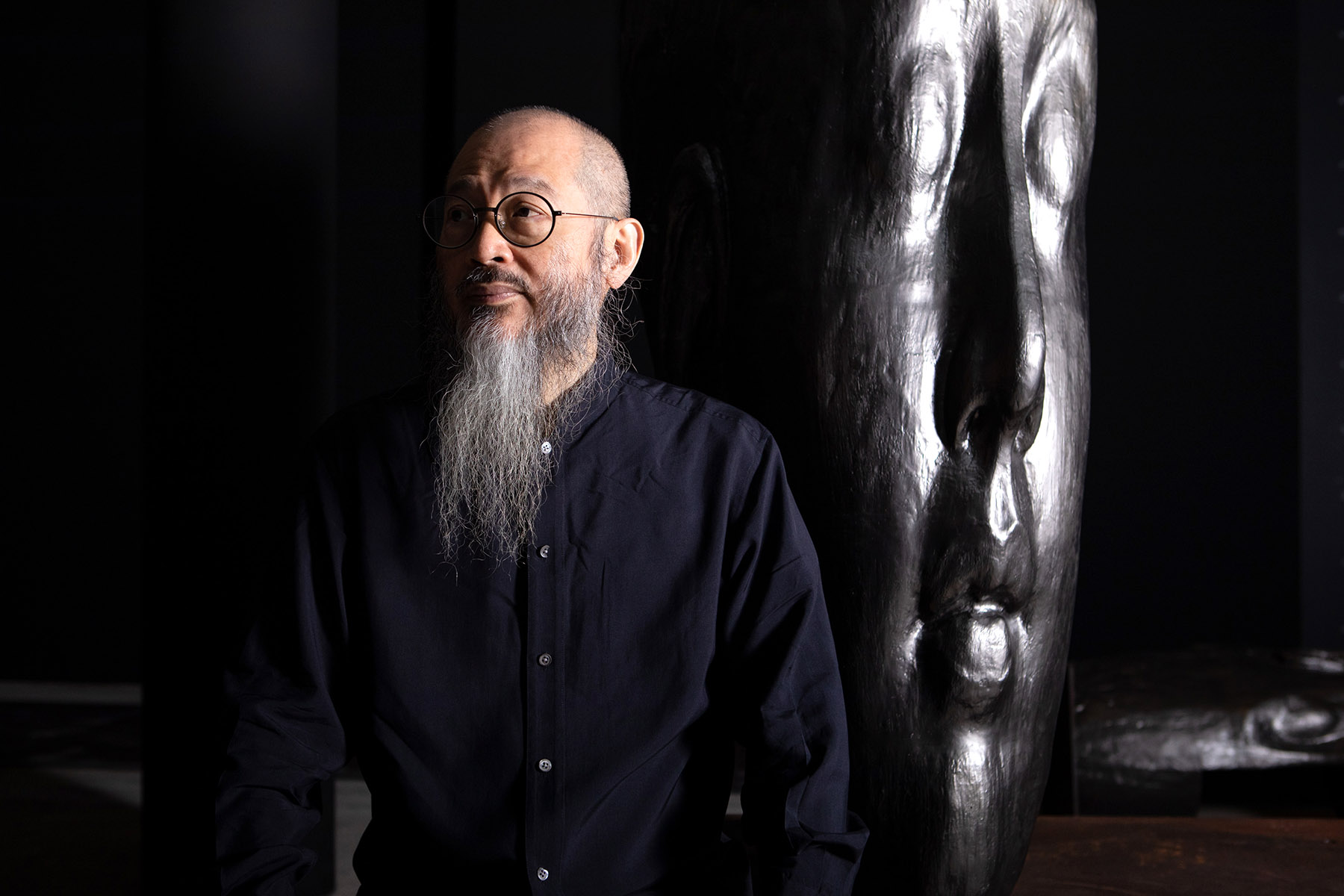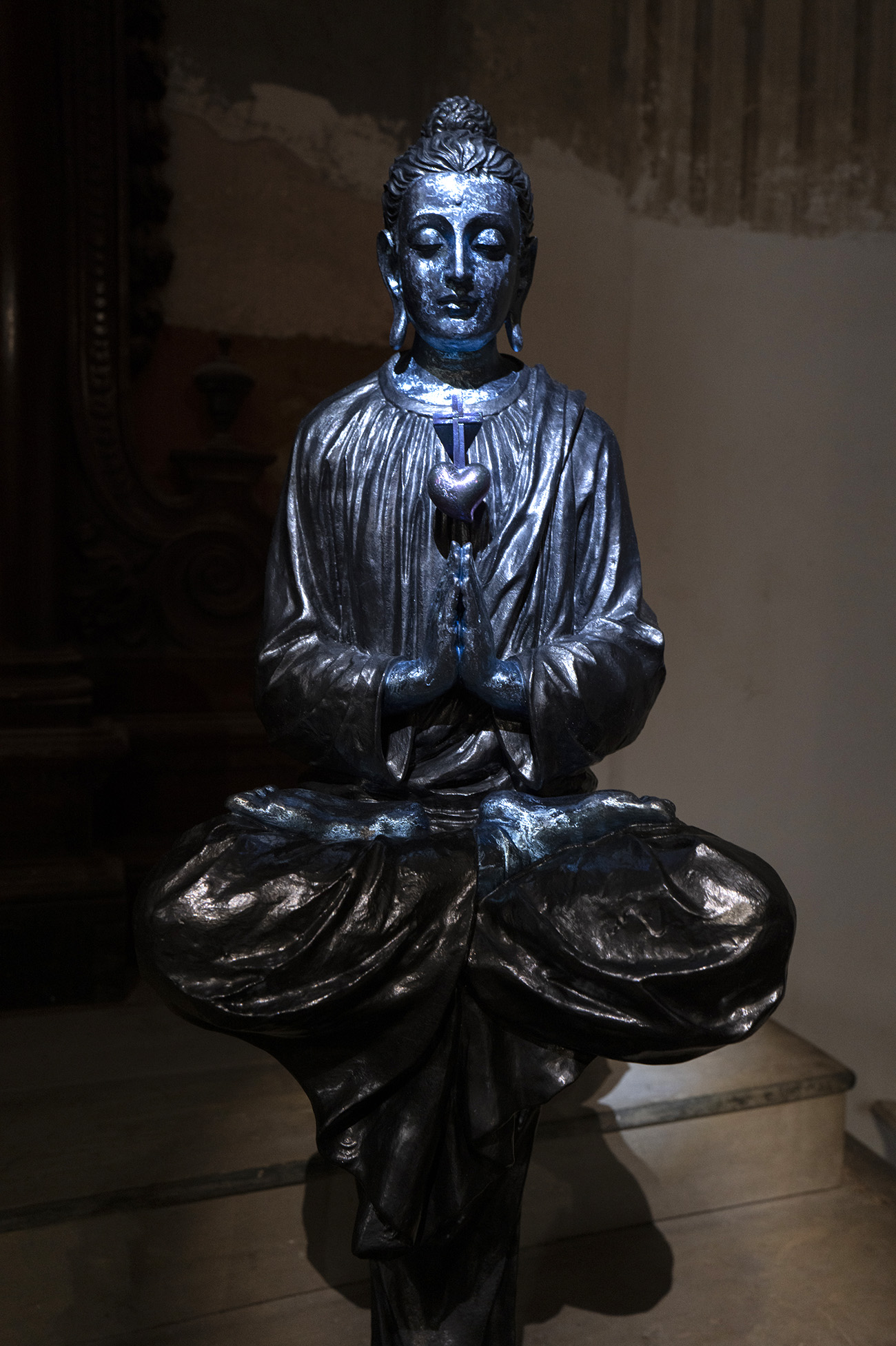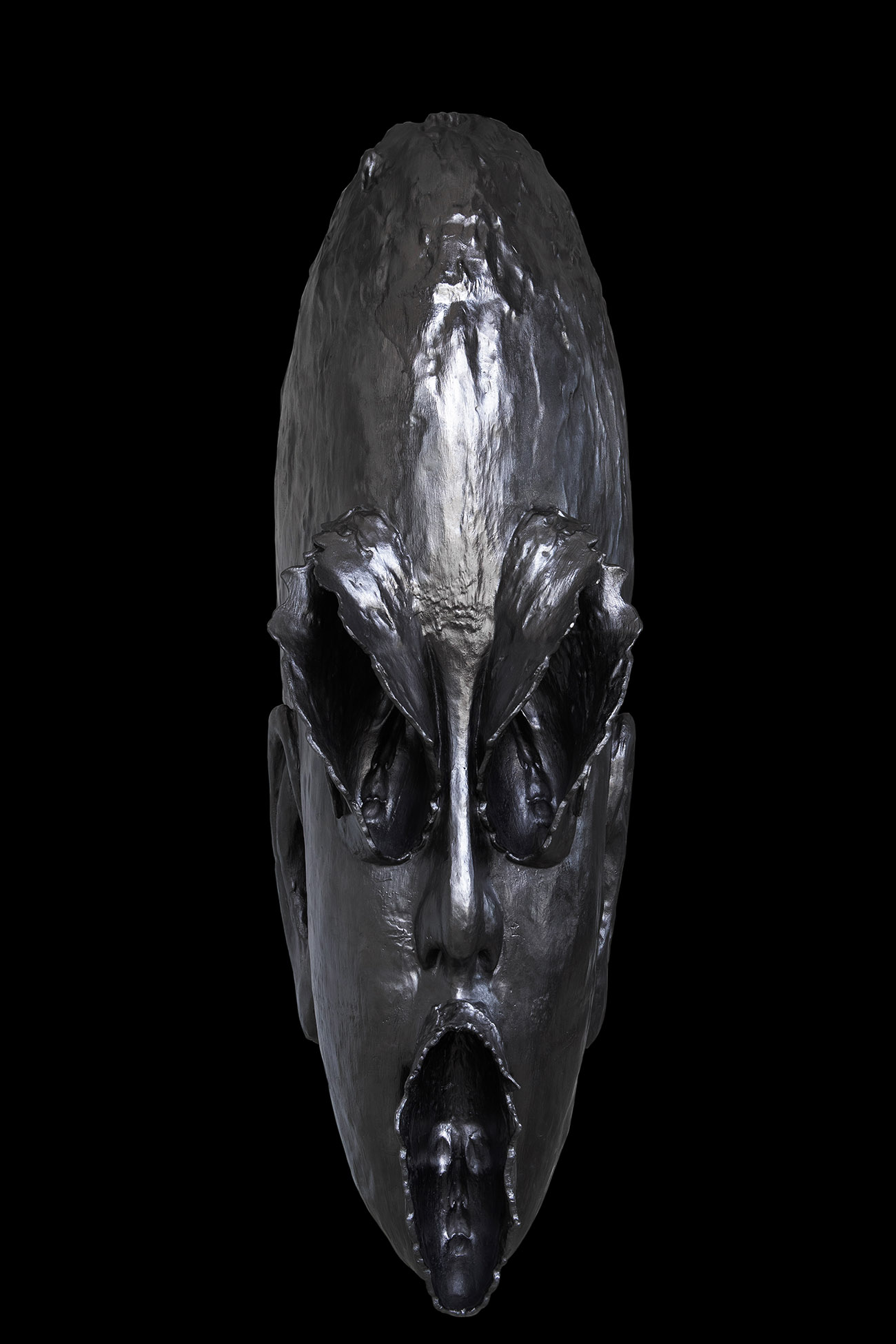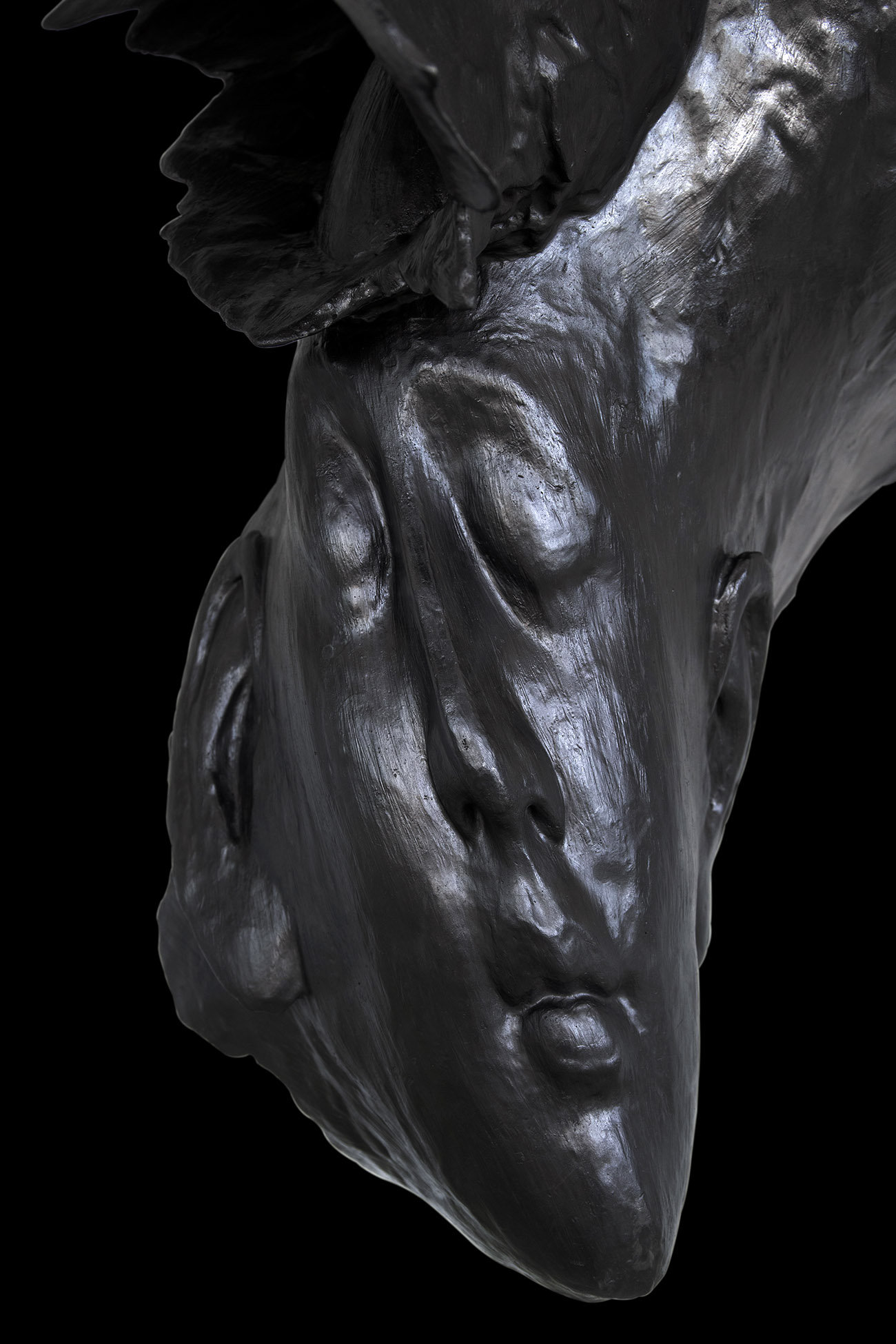
It’s peaceful inside the chapel of the Santa Maria della Pietà in the Castello district of Venice — the venue of Hong Kong multidisciplinary artist Wallace Chan’s solo exhibition, Transcendence. Four of Chan’s monumental titanium sculptures — of hollowed-out human heads with highly exaggerated features — hang from the chapel’s ceiling. The extreme elongation of the heads and the fact that from certain angles the sculptures appear almost two-dimensional add to their enigmatic quality. There is also a giant suspended tulip in the mix. Brian Eno’s I Dormienti plays in the background, inspiring a sense of calm.
Transcendence is a visual representation of the pursuit of spiritual enlightenment.
READ MORE: Fountain of life
“We intended to create a journey through the arrangement of the hanging sculptures, symbolizing a progression from a state of conflict, represented by the skull-like face, to one of peace and enlightenment, embodied in the tulip,” says the show’s curator, James Putnam. This is his third collaboration with Chan for a Venice-based project. “This is the latest iteration of our explorations of the boundaries between the material and metaphysical,” Putnam says. “Chan’s art is deeply intertwined with his meditation practice, which he honed during his time as a Buddhist monk.”
Transcendence is informed by both Buddhist philosophy as well as the Chinese concept of yin and yang. “I do feel that there’s a psychological power to Chan’s sculptures, whether you’re religious or not,” says the curator.

Cutting across cultures
The artist and curator were looking for a centrally located venue with both historical and sacred associations to mount the exhibition. The Santa Maria della Pietà church, with its splendid oval ceiling fresco, The Coronation of the Virgin by Giovanni Battista Tiepolo, and history of having Antonio Vivaldi as its resident violin master in 1703, more than met the brief.
“It humbles me to exhibit in such a sacred place, not just because it is a chapel but also because it is the chapel of Vivaldi’s church,” Chan says with a beaming smile.
Putnam explains that Vivaldi’s Four Seasons was in fact a huge inspiration behind Transcendence. Just as each of the four concertos in Vivaldi’s composition gives a musical expression to a season, covering the cycle from winter to spring, Chan’s sculptures too represent a chapter, each in a cyclical arrangement.

“It is almost a journey toward heaven and nirvana, and it is all about universal love, all interconnected,” Chan says. “If the audience can take away a moment of harmony and peace, if they leave with the understanding that there is always you in me and me in you and that no one is a complete foreigner, that’s transcendence.”
Two smaller sculptures by the artist sit on either side of the altar. The artist has borrowed from Catholic iconography of the Sacred Heart of Jesus to dress up his figure of the praying Buddha while that of Jesus sits cross-legged — a posture that brings to mind images of the meditating Buddha.
“To me, all religions are philosophical, rooted in universal love, much like art — a pursuit of the spirit,” Chan says. He points out that the core ideas informing both creative and religious pursuits can be quite similar. Often both are about a quest for transcending the temporal state to reach that of the eternal.

Material gains
As far as sculpting materials go, titanium is more durable than most metals and — figuratively speaking — is likely to last for all eternity. “It is stubborn and rigid, and must be understood before it can be tamed,” says the artist. He feels his use of titanium in Transcendence will help emphasize the fact that the desire to achieve an enlightened state is eternal.
Putnam particularly admires the liminal quality of Chan’s sculptures: “They seem to express titanium’s flowing molten state, which highlights its materiality, while at the same time expressing a sense of transience or ephemerality.” He goes on to add that while being huge and heavy, Chan’s sculptures also appear weightless, as if floating in the air. “There is a haunting quality to them and the strange, compressed perspective of Chan’s sere, enigmatic faces causes their appearance to shift as the observer walks around the sculptures.”
ALSO READ: Hit the reset button
Though Chan is better known as a master jewelry designer and his work is deeply rooted in Chinese culture, he has always been open to absorbing elements from a diversity of cultures. “I embrace anything that enriches my art, regardless of its origin, be it Eastern or Western, as my aim is to transcend cultural, national, and temporal constraints, and become a vessel for global unity and a universal language,” he says. “I might employ the technique of cutting emeralds to shape jade or use space-age metals common in scientific research to depict meditative figures, for I believe such exchanges can ignite more-potent creativity.”
If you go
Transcendence by Wallace Chan
Dates: Through Sept 30
Venue: Santa Maria della Pietà, Riva degli Schiavoni, 30122 Venice


